 Technology peripherals
Technology peripherals
 AI
AI
 Google AI video is awesome again! VideoPrism, an all-in-one universal visual encoder, refreshes 30 SOTA performance features
Google AI video is awesome again! VideoPrism, an all-in-one universal visual encoder, refreshes 30 SOTA performance features
Google AI video is awesome again! VideoPrism, an all-in-one universal visual encoder, refreshes 30 SOTA performance features
After the AI video model Sora became popular, major companies such as Meta and Google have stepped aside to do research and catch up with OpenAI.
Recently, researchers from the Google team proposed a universal video encoder-VideoPrism.
It can handle various video understanding tasks through a single frozen model.
 Picture
Picture
Paper address: https://arxiv.org/pdf/2402.13217.pdf
For example, VideoPrism can convert the following The people blowing candles in the video are classified and located.
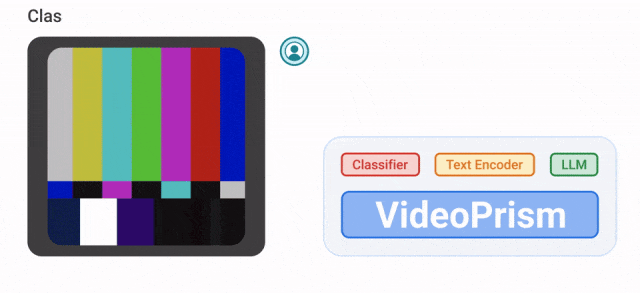 Picture
Picture
Video-text retrieval, according to the text content, the corresponding content in the video can be retrieved.
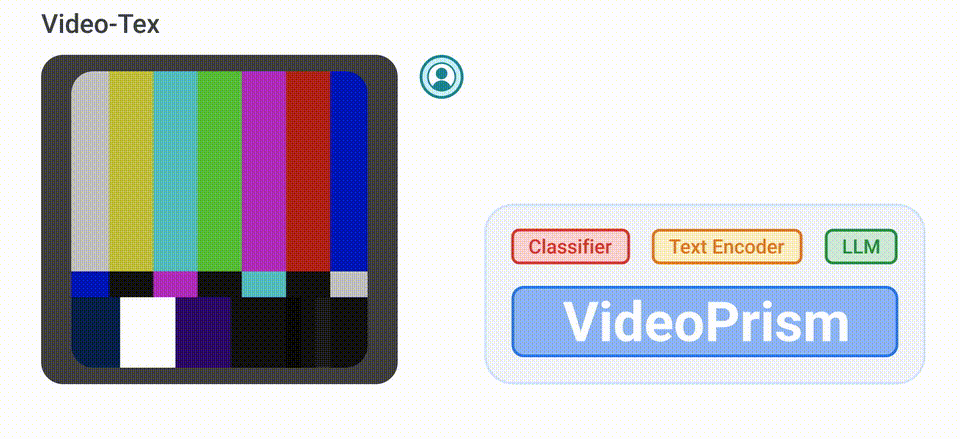 Picture
Picture
For another example, describe the video below - a little girl is playing with building blocks.
You can also conduct QA questions and answers.
- What color are the blocks she placed above the green blocks?
- Purple.
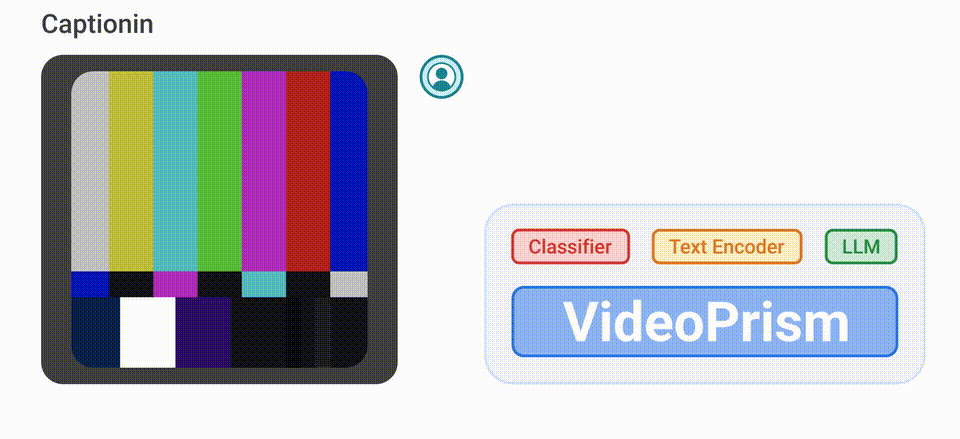 Picture
Picture
The researchers pre-trained VideoPrism on a heterogeneous corpus containing 36 million high-quality video subtitle pairs and 582 million video clips. , and with noisy parallel text (such as ASR transcribed text).
It is worth mentioning that VideoPrism refreshed 30 SOTA in 33 video understanding benchmark tests.
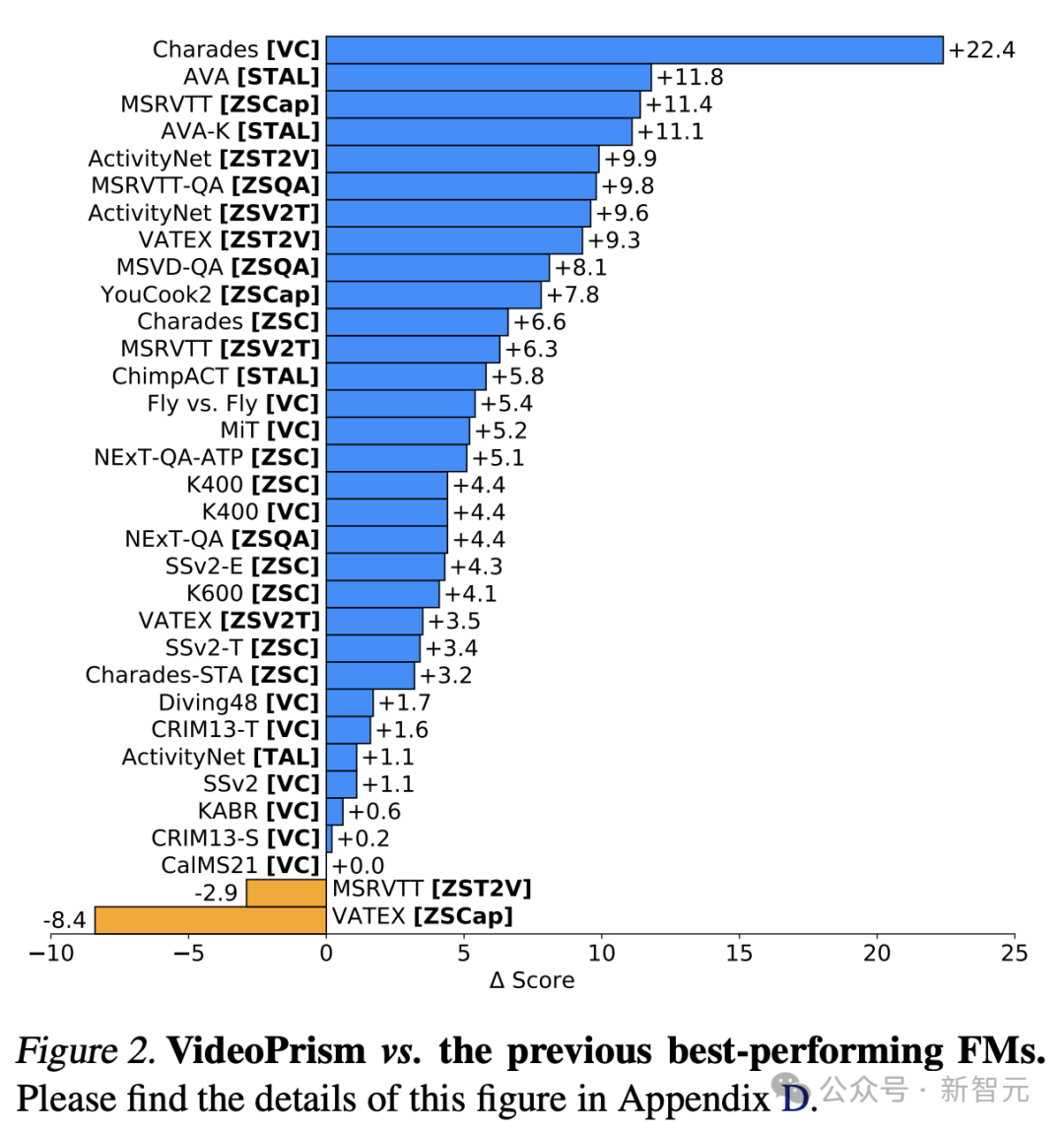 Picture
Picture
Universal Visual Encoder VideoPrism
Currently, the Video Fundamental Model (ViFM) has great potential to be used in huge Unlock new abilities within the corpus.
Although previous research has made great progress in general video understanding, building a true "basic video model" is still an elusive goal.
In response, Google launched VideoPrism, a general-purpose visual encoder designed to solve a wide range of video understanding tasks, including classification, localization, retrieval, subtitles, and question answering (QA).
VideoPrism is extensively evaluated on CV datasets, as well as CV tasks in scientific fields such as neuroscience and ecology.
Achieve state-of-the-art performance with minimal fitness by using a single frozen model.
In addition, Google researchers say that this frozen encoder setting follows previous research and takes into account its practical practicality, as well as the high cost of computation and fine-tuning the video model.
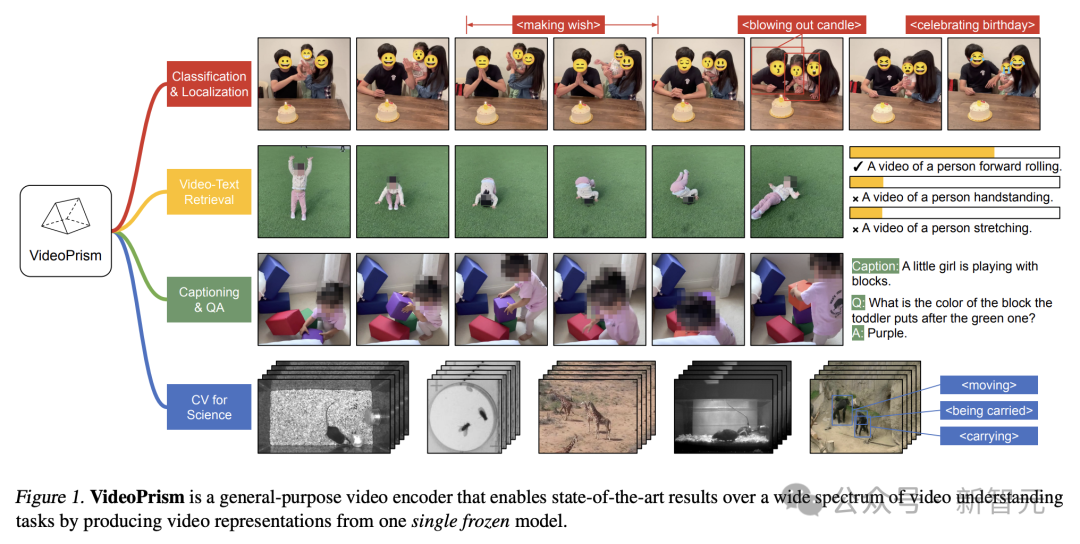 Picture
Picture
Design architecture, two-stage training method
The design concept behind VideoPrism is as follows.
Pre-training data is the basis of the basic model (FM). The ideal pre-training data for ViFM is a representative sample of all videos in the world.
In this sample, most videos do not have parallel text describing the content.
However, if trained on such text, it can provide invaluable semantic clues about the video space.
Therefore, Google’s pre-training strategy should focus primarily on the video mode while fully utilizing any available video-text pairs.
On the data side, Google researchers approximated this by assembling 36 million high-quality video subtitle pairs and 582 million video clips with noisy parallel text (such as ASR transcriptions, generated subtitles, and retrieved text). Required pre-training corpus.
 picture
picture
 Picture
Picture
In terms of modeling, the authors first comparatively learn semantic video embeddings from all video-text pairs of different qualities.
The masked video modeling described below is then improved by global and label refinement of the semantic embeddings using a wide range of pure video data.
Despite the success in natural language, masked data modeling remains challenging for CV due to the lack of semantics in the original visual signal.
Existing research addresses this challenge by borrowing indirect semantics (such as using CLIP to guide models or tokenizers, or implicit semantics) or implicitly generalizing them (such as labeling visual patches), which converts high masking rates into Combined with lightweight decoders.
Based on the above ideas, the Google team adopted a two-stage approach based on pre-training data.
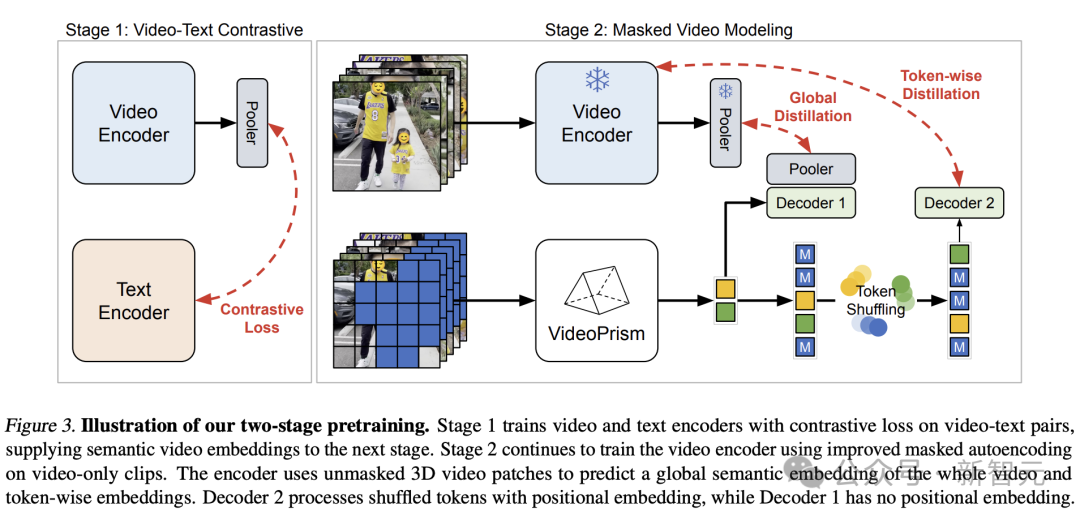 Picture
Picture
In the first stage, contrastive learning is performed to align the video encoder with the text encoder using all video-text pairs.
Based on previous research, the Google team minimized the similarity scores of all video-text pairs in the batch, performing symmetric cross-entropy loss minimization.
And use CoCa's image model to initialize the spatial coding module, and incorporate WebLI into pre-training.
Before calculating the loss, the video encoder features are aggregated through multi-head attention pooling (MAP).
This stage allows the video encoder to learn rich visual semantics from linguistic supervision, and the resulting model provides semantic video embeddings for the second stage training.
 Picture
Picture
In the second stage, the encoder continues to be trained and two improvements are made:
-The model needs to be based on the unmasked The input video patches of the code are used to predict the video-level global embedding and token embedding in the first stage
- The output token of the encoder is randomly shuffled before being passed to the decoder to avoid learning shortcuts.
Notably, the researchers’ pre-training leveraged two supervision signals: the textual description of the video, and contextual self-supervision, allowing VideoPrism to perform well on appearance- and action-centric tasks.
In fact, previous research shows that video captions mainly reveal appearance cues, while contextual supervision helps learn actions.
 Picture
Picture
Experimental Results
Next, the researchers evaluated VideoPrism on a wide range of video-centric comprehension tasks, showing Its capabilities and versatility.
Mainly divided into the following four categories:
(1) Generally only video understanding, including classification and spatio-temporal positioning
(2) Zero-sample video text retrieval
(3) Zero-sample video subtitles and quality checking
(4) CV tasks in science
Classification and spatiotemporal localization
Table 2 shows freezing on VideoGLUE Backbone results.
VideoPrism significantly outperforms the baseline on all datasets. Furthermore, increasing VideoPrism’s underlying model size from ViT-B to ViT-g significantly improves performance.
It is worth noting that no baseline method achieves the second best result across all benchmarks, suggesting that previous methods may have been developed to target certain aspects of video understanding.
And VideoPrism continues to improve on this broad task.
This result shows that VideoPrism integrates various video signals into one encoder: semantics at multiple granularities, appearance and motion cues, spatiotemporal information, and the ability to interpret different video sources (such as online videos and scripted performances) of robustness.
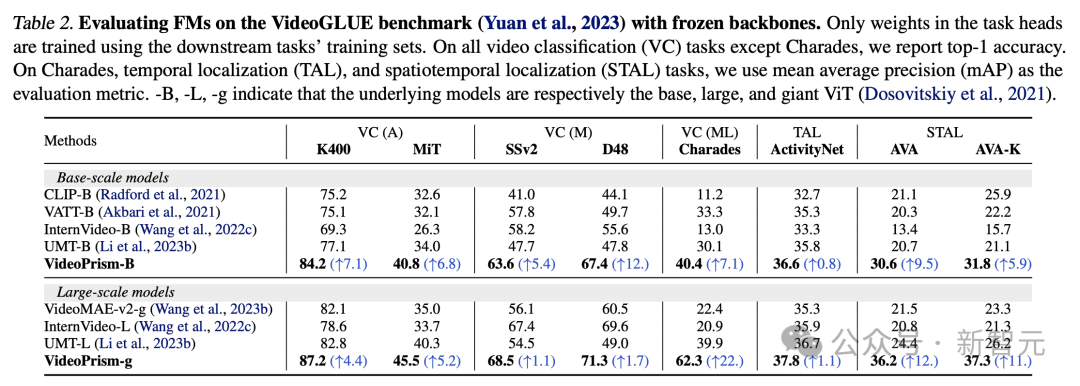 Picture
Picture
Zero-shot video text retrieval and classification
Tables 3 and 4 summarize the results of video text retrieval and video classification respectively.
VideoPrism’s performance refreshes multiple benchmarks, and on challenging data sets, VideoPrism has achieved very significant improvements compared with previous technologies.
 Picture
Picture
Most results for the base model VideoPrism-B actually outperform existing larger-scale models.
Furthermore, VideoPrism is comparable to or even better than the models in Table 4 pretrained using in-domain data and additional modalities (e.g., audio). These improvements in zero-shot retrieval and classification tasks reflect VideoPrism’s powerful generalization capabilities.
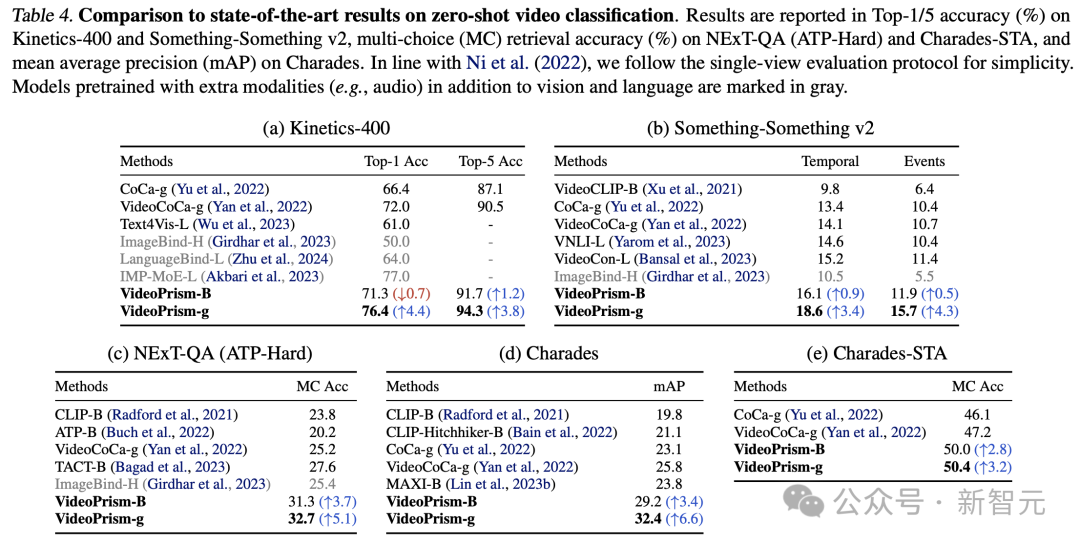 Picture
Picture
Zero-sample video subtitles and quality check
Table 5 and Table 6 show, respectively, zero-sample video subtitles and QA the result of.
Despite the simple model architecture and the small number of adapter parameters, the latest models are still competitive and, with the exception of VATEX, rank among the top methods for freezing visual and language models.
The results show that the VideoPrism encoder can generalize well to video-to-language generation tasks.
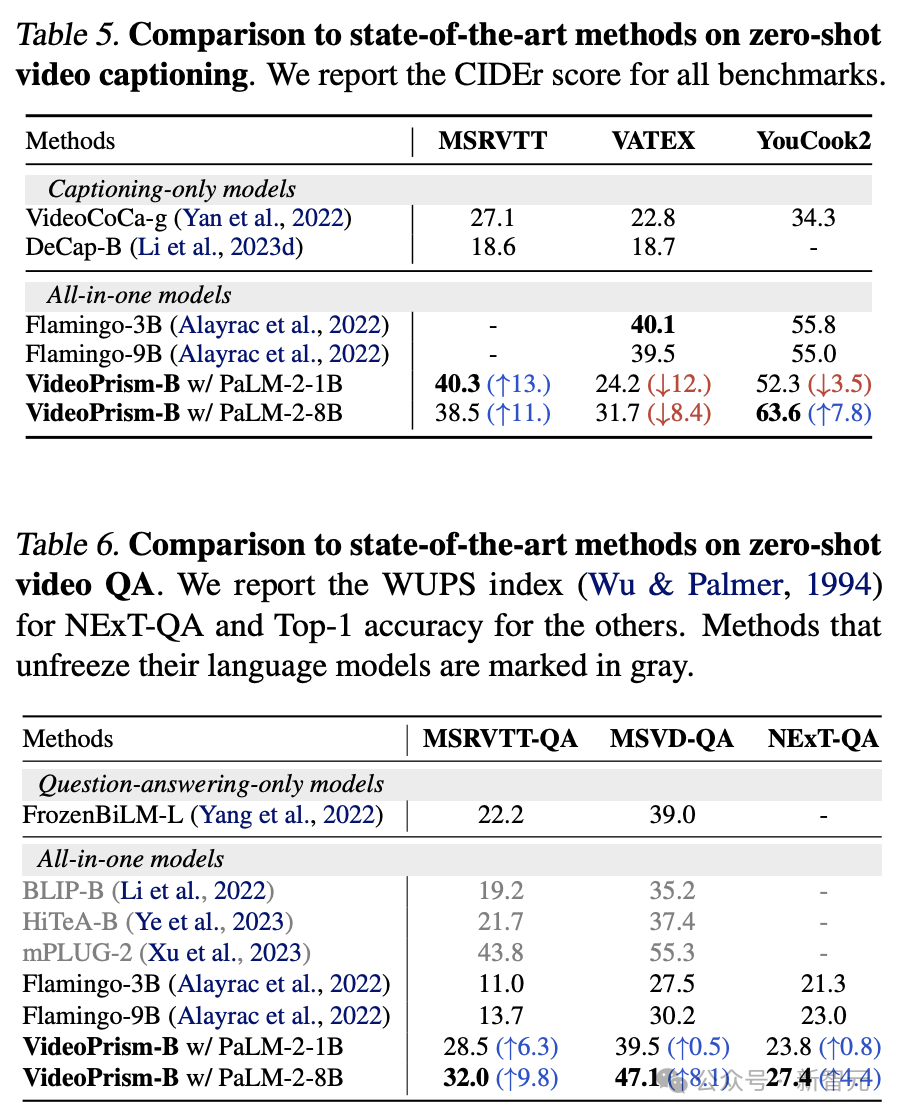 Pictures
Pictures
CV tasks in science
Generic ViFM uses a shared frozen encoder in all evaluations and its performance is comparable to that of specialized Comparable to domain-specific models for a single task.
In particular, VideoPrism often performs best and outperforms domain expert models with base scale models.
Scaling to large-scale models can further improve performance on all datasets. These results demonstrate that ViFM has the potential to significantly accelerate video analysis in different fields.

Ablation Study
Figure 4 shows the ablation results. Notably, VideoPrism’s continued improvements on SSv2 demonstrate the effectiveness of data management and model design efforts in promoting motion understanding in video.
Although the comparative baselines already achieved competitive results on K400, the proposed global distillation and token shuffling further improve the accuracy.
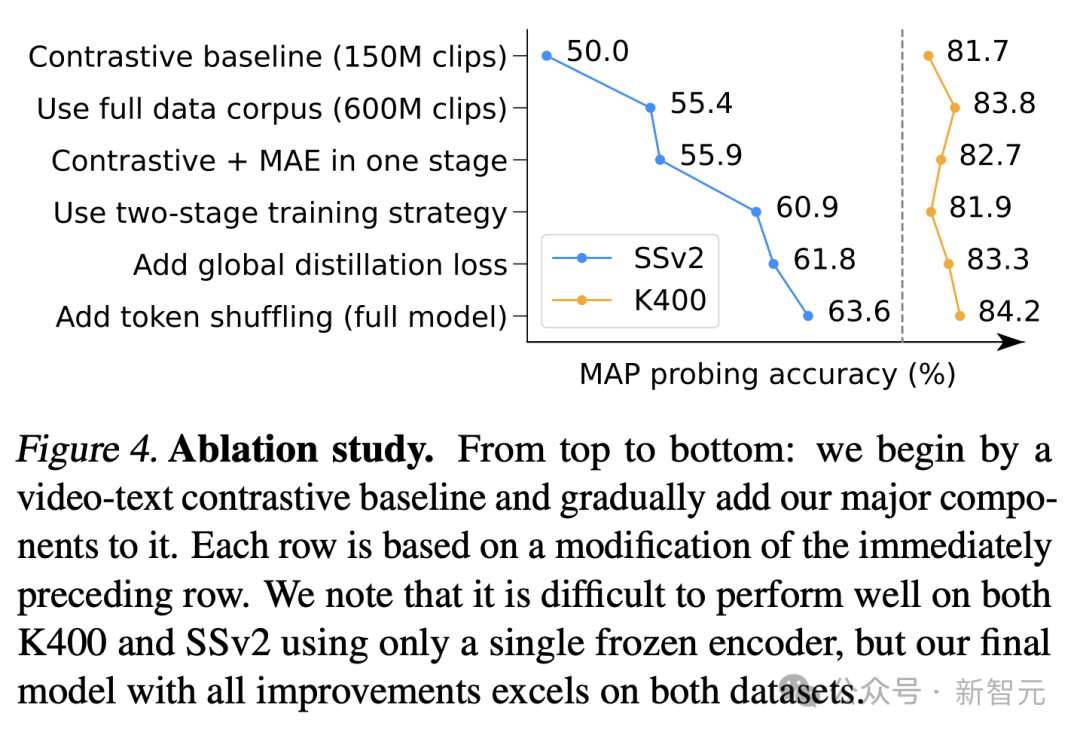 Picture
Picture
Reference:
https://arxiv.org/pdf/2402.13217.pdf
https://blog.research.google/2024/02/videoprism-foundational-visual-encoder.html
The above is the detailed content of Google AI video is awesome again! VideoPrism, an all-in-one universal visual encoder, refreshes 30 SOTA performance features. For more information, please follow other related articles on the PHP Chinese website!

Hot AI Tools

Undresser.AI Undress
AI-powered app for creating realistic nude photos

AI Clothes Remover
Online AI tool for removing clothes from photos.

Undress AI Tool
Undress images for free

Clothoff.io
AI clothes remover

Video Face Swap
Swap faces in any video effortlessly with our completely free AI face swap tool!

Hot Article

Hot Tools

Notepad++7.3.1
Easy-to-use and free code editor

SublimeText3 Chinese version
Chinese version, very easy to use

Zend Studio 13.0.1
Powerful PHP integrated development environment

Dreamweaver CS6
Visual web development tools

SublimeText3 Mac version
God-level code editing software (SublimeText3)

Hot Topics
 How to use the chrono library in C?
Apr 28, 2025 pm 10:18 PM
How to use the chrono library in C?
Apr 28, 2025 pm 10:18 PM
Using the chrono library in C can allow you to control time and time intervals more accurately. Let's explore the charm of this library. C's chrono library is part of the standard library, which provides a modern way to deal with time and time intervals. For programmers who have suffered from time.h and ctime, chrono is undoubtedly a boon. It not only improves the readability and maintainability of the code, but also provides higher accuracy and flexibility. Let's start with the basics. The chrono library mainly includes the following key components: std::chrono::system_clock: represents the system clock, used to obtain the current time. std::chron
 Decryption Gate.io Strategy Upgrade: How to Redefine Crypto Asset Management in MeMebox 2.0?
Apr 28, 2025 pm 03:33 PM
Decryption Gate.io Strategy Upgrade: How to Redefine Crypto Asset Management in MeMebox 2.0?
Apr 28, 2025 pm 03:33 PM
MeMebox 2.0 redefines crypto asset management through innovative architecture and performance breakthroughs. 1) It solves three major pain points: asset silos, income decay and paradox of security and convenience. 2) Through intelligent asset hubs, dynamic risk management and return enhancement engines, cross-chain transfer speed, average yield rate and security incident response speed are improved. 3) Provide users with asset visualization, policy automation and governance integration, realizing user value reconstruction. 4) Through ecological collaboration and compliance innovation, the overall effectiveness of the platform has been enhanced. 5) In the future, smart contract insurance pools, forecast market integration and AI-driven asset allocation will be launched to continue to lead the development of the industry.
 Which of the top ten currency trading platforms in the world are the latest version of the top ten currency trading platforms
Apr 28, 2025 pm 08:09 PM
Which of the top ten currency trading platforms in the world are the latest version of the top ten currency trading platforms
Apr 28, 2025 pm 08:09 PM
The top ten cryptocurrency trading platforms in the world include Binance, OKX, Gate.io, Coinbase, Kraken, Huobi Global, Bitfinex, Bittrex, KuCoin and Poloniex, all of which provide a variety of trading methods and powerful security measures.
 How to measure thread performance in C?
Apr 28, 2025 pm 10:21 PM
How to measure thread performance in C?
Apr 28, 2025 pm 10:21 PM
Measuring thread performance in C can use the timing tools, performance analysis tools, and custom timers in the standard library. 1. Use the library to measure execution time. 2. Use gprof for performance analysis. The steps include adding the -pg option during compilation, running the program to generate a gmon.out file, and generating a performance report. 3. Use Valgrind's Callgrind module to perform more detailed analysis. The steps include running the program to generate the callgrind.out file and viewing the results using kcachegrind. 4. Custom timers can flexibly measure the execution time of a specific code segment. These methods help to fully understand thread performance and optimize code.
 Recommended reliable digital currency trading platforms. Top 10 digital currency exchanges in the world. 2025
Apr 28, 2025 pm 04:30 PM
Recommended reliable digital currency trading platforms. Top 10 digital currency exchanges in the world. 2025
Apr 28, 2025 pm 04:30 PM
Recommended reliable digital currency trading platforms: 1. OKX, 2. Binance, 3. Coinbase, 4. Kraken, 5. Huobi, 6. KuCoin, 7. Bitfinex, 8. Gemini, 9. Bitstamp, 10. Poloniex, these platforms are known for their security, user experience and diverse functions, suitable for users at different levels of digital currency transactions
 What are the top ten virtual currency trading apps? The latest digital currency exchange rankings
Apr 28, 2025 pm 08:03 PM
What are the top ten virtual currency trading apps? The latest digital currency exchange rankings
Apr 28, 2025 pm 08:03 PM
The top ten digital currency exchanges such as Binance, OKX, gate.io have improved their systems, efficient diversified transactions and strict security measures.
 How much is Bitcoin worth
Apr 28, 2025 pm 07:42 PM
How much is Bitcoin worth
Apr 28, 2025 pm 07:42 PM
Bitcoin’s price ranges from $20,000 to $30,000. 1. Bitcoin’s price has fluctuated dramatically since 2009, reaching nearly $20,000 in 2017 and nearly $60,000 in 2021. 2. Prices are affected by factors such as market demand, supply, and macroeconomic environment. 3. Get real-time prices through exchanges, mobile apps and websites. 4. Bitcoin price is highly volatile, driven by market sentiment and external factors. 5. It has a certain relationship with traditional financial markets and is affected by global stock markets, the strength of the US dollar, etc. 6. The long-term trend is bullish, but risks need to be assessed with caution.
 What are the top currency trading platforms? The top 10 latest virtual currency exchanges
Apr 28, 2025 pm 08:06 PM
What are the top currency trading platforms? The top 10 latest virtual currency exchanges
Apr 28, 2025 pm 08:06 PM
Currently ranked among the top ten virtual currency exchanges: 1. Binance, 2. OKX, 3. Gate.io, 4. Coin library, 5. Siren, 6. Huobi Global Station, 7. Bybit, 8. Kucoin, 9. Bitcoin, 10. bit stamp.





